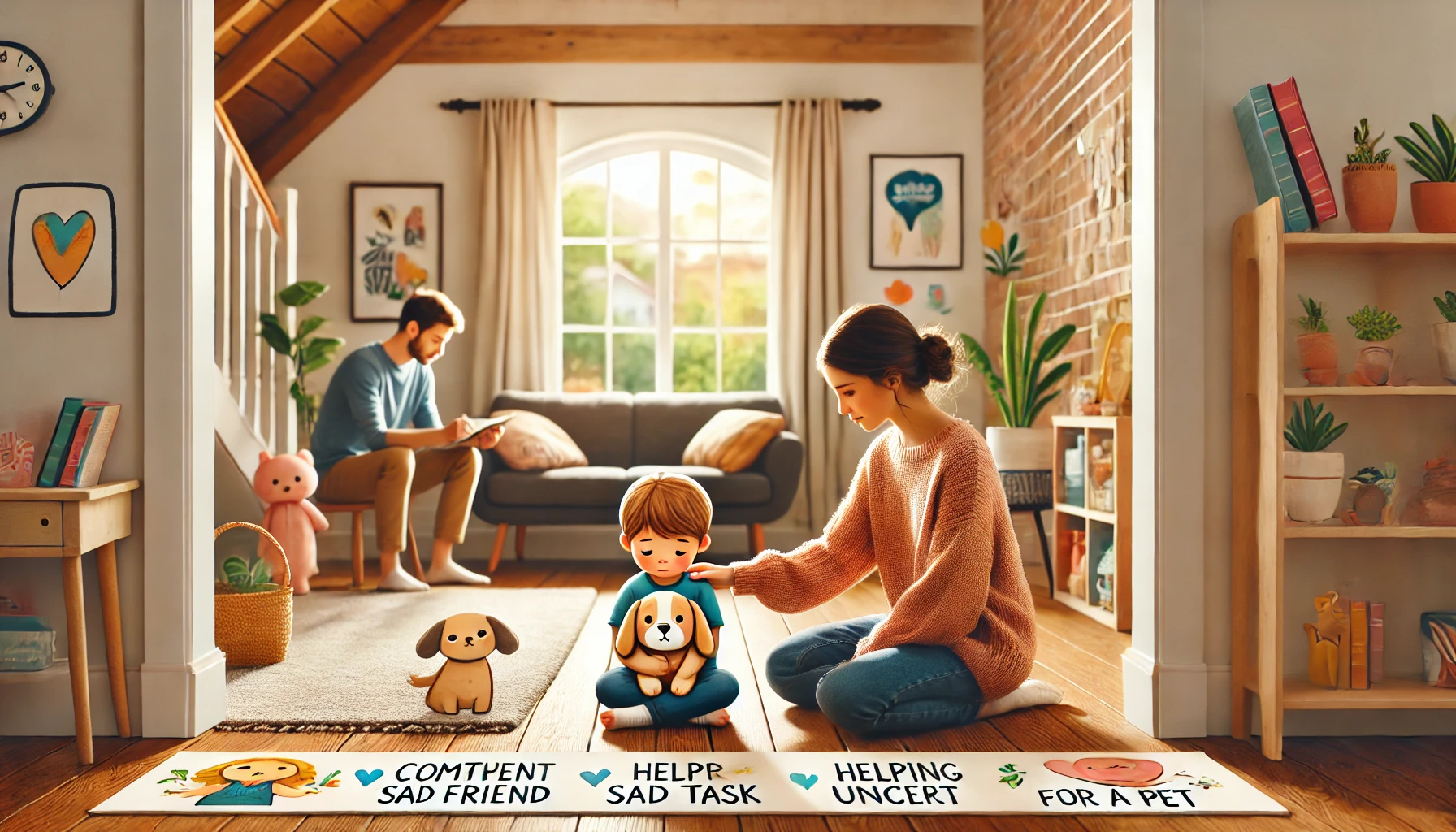How to Teach Young Children About Empathy at Home
Empathy is the ability to understand and share the feelings of others. Teaching young children about empathy helps them build strong relationships, develop kindness, and navigate social interactions with compassion. Parents play a key role in fostering empathy through modeling, storytelling, and daily conversations. In this article, we’ll explore practical ways to nurture empathy in young children.
Why Teaching Empathy is Important
- Encourages kindness and respect – Helps children treat others with care.
- Builds strong friendships – Teaches kids how to connect with others emotionally.
- Develops emotional intelligence – Helps children recognize and understand feelings.
- Improves conflict resolution skills – Encourages peaceful problem-solving.
- Fosters inclusivity and acceptance – Teaches children to appreciate different perspectives.
1. Model Empathy in Everyday Life
Children learn empathy by observing how adults interact with others.
Activity Idea:
- Show concern for others: “That person looks sad. Let’s see if we can help.”
- Speak kindly and listen attentively when someone shares their feelings.
- Acknowledge your child’s emotions: “I see you’re upset. Want to talk about it?”
What Kids Learn:
- How to recognize and respond to emotions
- The value of treating others with care
- That empathy is a daily practice
2. Teach Children to Identify and Express Emotions
Understanding their own emotions helps children relate to how others feel.
Activity Idea:
- Use emotion flashcards with different facial expressions.
- Ask, “How are you feeling today?” and encourage them to describe their emotions.
- Read books about emotions and discuss how characters feel in different situations.
What Kids Learn:
- Self-awareness of their feelings
- How to express emotions in words
- Recognizing emotions in others
3. Use Role-Playing to Practice Empathy
Pretend play helps children understand different perspectives.
Activity Idea:
- Act out scenarios like comforting a sad friend or helping someone in need.
- Use stuffed animals or dolls to demonstrate caring behaviors.
- Encourage children to take turns playing different roles in a story.
What Kids Learn:
- How to step into someone else’s shoes
- The importance of showing compassion
- Social problem-solving skills
4. Read Books That Promote Empathy
Stories help children understand different perspectives and emotions.
Activity Idea:
- Read books like Last Stop on Market Street or The Rabbit Listened.
- Ask, “How do you think the character felt?”
- Encourage children to relate the story to their own experiences.
What Kids Learn:
- How actions affect others
- The importance of kindness in different situations
- Emotional connection through storytelling
5. Encourage Acts of Kindness
Small gestures help children practice empathy in real life.
Activity Idea:
- Create a kindness challenge where kids do something nice each day.
- Encourage helping a friend, sibling, or neighbor.
- Praise kind actions: “That was so thoughtful of you to share your toy.”
What Kids Learn:
- The joy of helping others
- How small actions can make a big difference
- The habit of thinking about others’ needs
6. Discuss Different Perspectives
Helping children understand that others have different thoughts and feelings strengthens empathy.
Activity Idea:
- Ask, “How would you feel if someone took your toy without asking?”
- Watch short videos and discuss characters’ emotions and actions.
- Encourage children to listen to others’ points of view before reacting.
What Kids Learn:
- The ability to see things from another perspective
- Understanding that different people have different emotions
- How to think before reacting in social situations
7. Teach Conflict Resolution Through Empathy
Helping children handle disagreements with understanding promotes peaceful solutions.
Activity Idea:
- When conflicts arise, ask, “How do you think the other person feels?”
- Encourage saying, “I understand you’re upset. Let’s find a way to fix this together.”
- Role-play conflict resolution by taking turns explaining emotions.
What Kids Learn:
- How to handle disagreements respectfully
- The value of listening before responding
- Strategies for peaceful problem-solving
8. Be Patient and Reinforce Empathy Daily
Developing empathy takes time, so ongoing encouragement is key.
Activity Idea:
- Recognize and praise moments when your child shows empathy.
- Gently remind them to think about others’ feelings.
- Encourage daily reflection: “What’s something kind you did today?”
What Kids Learn:
- That empathy is an ongoing practice
- How kindness and understanding create positive relationships
- The lifelong value of caring for others
Final Thoughts
Teaching young children about empathy helps them develop emotional intelligence, kindness, and strong social connections. By modeling empathy, encouraging kind actions, and using storytelling, parents can create a home environment where children learn to understand and care for others.
